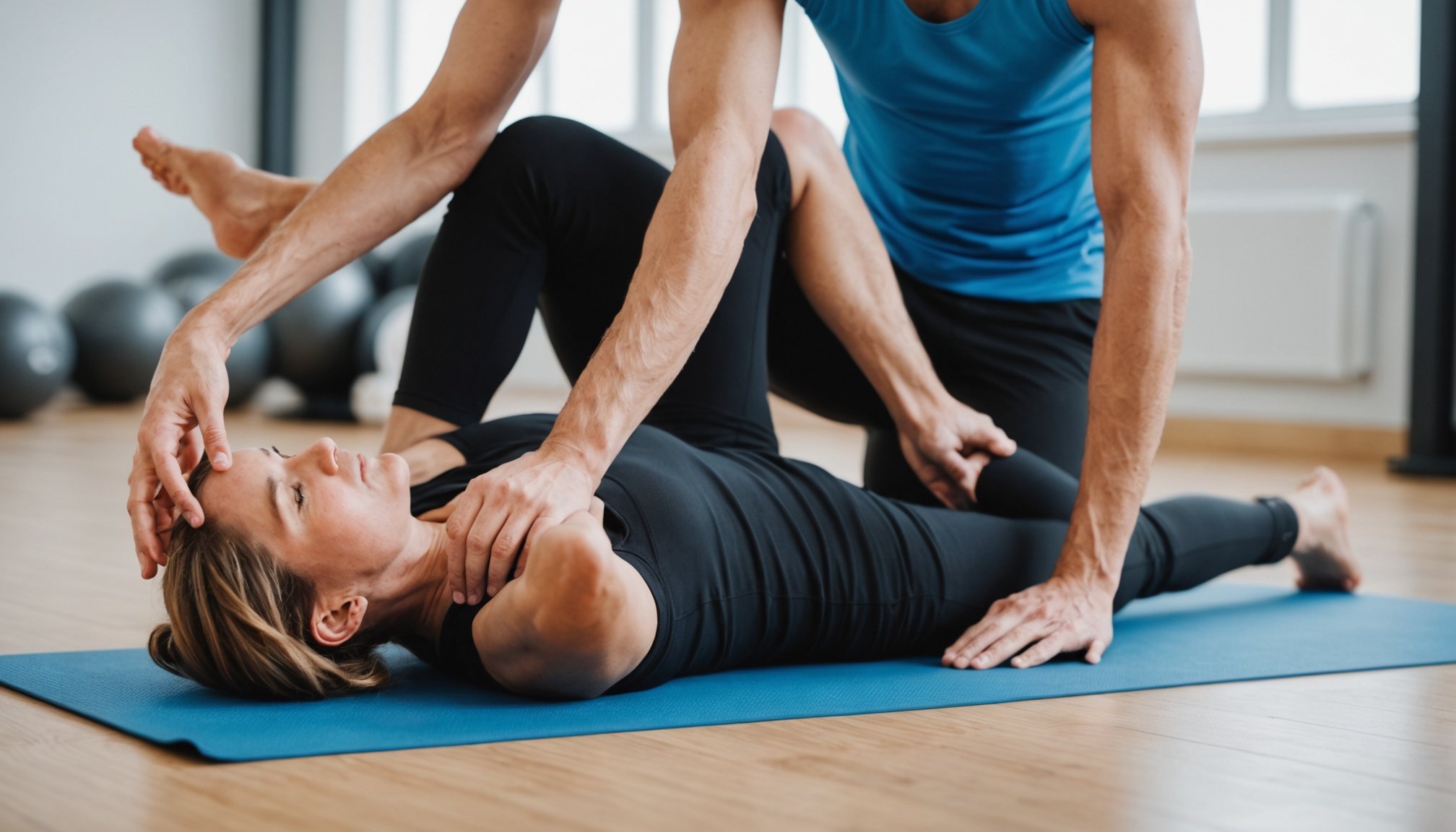Enhancing Athlete Injury Prevention: Innovative Strategies for UK Sports Therapists to Incorporate Yoga
In the fast-paced and demanding world of sports, injury prevention is a top priority for athletes and sports therapists alike. One innovative strategy that has gained significant attention in recent years is the integration of yoga into athletic training. Here, we will delve into the benefits, methods, and practical applications of incorporating yoga into sports therapy, highlighting how this ancient practice can enhance athlete performance and reduce the risk of injuries.
Understanding the Benefits of Yoga for Athletes
Yoga, often misunderstood as merely a flexibility exercise, offers a myriad of benefits that can significantly enhance an athlete’s performance and overall health. Here are some key advantages of incorporating yoga into an athlete’s training regimen:
In parallel : Effective Strategies for UK Sports Clubs to Connect with Underserved Communities
Physical Benefits
- Improved Flexibility and Mobility: Yoga helps in increasing flexibility and mobility, which are crucial for athletes to maintain optimal performance and prevent injuries. Practices like Yin Yoga, for example, target the deeper tissues of the body, such as ligaments, joints, and fascia, which are often affected in sports like football[5].
- Enhanced Strength and Stability: Yoga postures, such as the Warrior 3 pose, improve balance, strength, and stability. These attributes are essential for athletes in various sports, including golf, baseball, and hockey, where balance and precision are key[2].
- Better Body Awareness: Yoga enhances body awareness, allowing athletes to understand their physical limitations and capabilities better. This increased awareness can help in preventing overuse injuries and improving overall physical performance[4].
Psychological Benefits
- Reduced Stress and Improved Mental Focus: Yoga and meditation practices help athletes manage stress and improve mental focus. This is particularly beneficial for athletes who need to maintain a high level of concentration during competitions[5].
- Enhanced Recovery: Yoga aids in recovery by reducing muscle tension and improving circulation. This can help athletes recover faster from intense training sessions and competitions[5].
Integrating Yoga into Athletic Training
To effectively incorporate yoga into an athlete’s training program, sports therapists need to understand how to balance and complement existing training regimens.
Combining Yoga with Other Forms of Training
- Running and Fitness: For runners, combining yoga with fitness training can optimize performance. Yoga helps in improving mobility around the ankles, knees, and hips, reducing the risk of injuries. It also complements cardio workouts by providing an alternative to running, thus avoiding overuse injuries[1].
- Strength Training: Yoga can be integrated with strength training to enhance muscle strength and flexibility. For instance, practices like TRX Yoga combine yoga with suspension training, providing a secure and effective way to strengthen the body after an injury[3].
Tailoring Yoga Practices for Different Sports
Different sports require different types of yoga practices to address specific needs.
Also to see : Top Strategies for UK Athletes to Conquer Stress and Anxiety Effectively
| Sport | Yoga Practice | Benefits |
|---|---|---|
| Football | Yin Yoga | Improves flexibility, targets deep tissues around hips and pelvis, aids in recovery and stress reduction[5] |
| Running | Vinyasa Yoga | Enhances cardiovascular health, improves mobility, and reduces the risk of lower extremity injuries[1] |
| Golf | Hatha Yoga | Improves balance, strength, and stability, essential for precise movements in golf[2] |
Practical Strategies for Incorporating Yoga
Here are some practical strategies and tips for sports therapists to incorporate yoga into their athletes’ training programs:
Starting with Basic Postures
- Warrior 3 Pose: This pose is excellent for improving balance, strength, and concentration. It involves standing on one leg while extending the other leg and arm parallel to the ground. Variants using a wall or yoga blocks can be helpful for beginners[2].
Incorporating Yin Yoga
- Butterfly Pose: This pose is beneficial for improving flexibility in the hips and groin area. Athletes sit with their legs extended, then bend their knees and bring their feet together, stretching their hips and lower back[5].
Creating a Balanced Training Schedule
- Alternating Cardio and Strength Training: Athletes should alternate between cardio sessions and strength training to avoid overuse injuries. Including a yoga session once a week can help in maintaining flexibility and reducing muscle tension[1].
Case Studies and Success Stories
Several athletes and sports therapists have seen significant benefits from incorporating yoga into their training regimens.
Callum’s Experience in Football
Callum, a former football player and now a qualified yoga instructor, started practicing yoga to recover from matches and training sessions. He found that yoga improved his flexibility, reduced stress, and enhanced his overall performance. He now recommends Yin Yoga to football players, emphasizing its benefits in targeting deep tissues and improving recovery[5].
Géraldine Lizard’s Adventure
Géraldine Lizard, a fitness coach and adventurous runner, incorporates yoga into her training to maintain flexibility and prevent injuries. She emphasizes the importance of regularity in yoga practice, combining it with fitness and running to optimize her performance and stay injury-free[1].
Overcoming Common Challenges
While incorporating yoga into athletic training can be highly beneficial, there are some common challenges that sports therapists might face.
Initial Resistance
Some athletes may be resistant to trying yoga due to misconceptions about its intensity or effectiveness. It is crucial to explain the benefits clearly and start with gentle, introductory sessions to build trust and confidence.
Finding the Right Type of Yoga
Different types of yoga cater to different needs. For example, Vinyasa Yoga is more dynamic and can be beneficial for runners, while Yin Yoga is more static and suitable for athletes needing deep tissue work. Understanding the specific needs of the athlete and choosing the appropriate type of yoga is essential[5].
Incorporating yoga into athletic training is a holistic approach that can significantly enhance athlete performance while reducing the risk of injuries. By understanding the physical and psychological benefits of yoga, tailoring practices to specific sports, and integrating yoga into existing training regimens, sports therapists can provide their athletes with a comprehensive and effective injury prevention strategy.
Key Takeaways
- Regular Practice: Consistency is key when it comes to yoga. Encourage athletes to practice yoga at least once a week to see noticeable benefits.
- Combination with Other Training: Yoga should be seen as a complement to other forms of training, not a replacement. Balancing cardio, strength training, and yoga can lead to optimal performance.
- Tailored Practices: Different sports require different types of yoga practices. Understanding these specific needs is crucial for effective integration.
By embracing yoga as a part of their training model, athletes and sports therapists can achieve better performance, improved health, and a reduced risk of injuries, ultimately leading to a more successful and sustainable athletic career.











